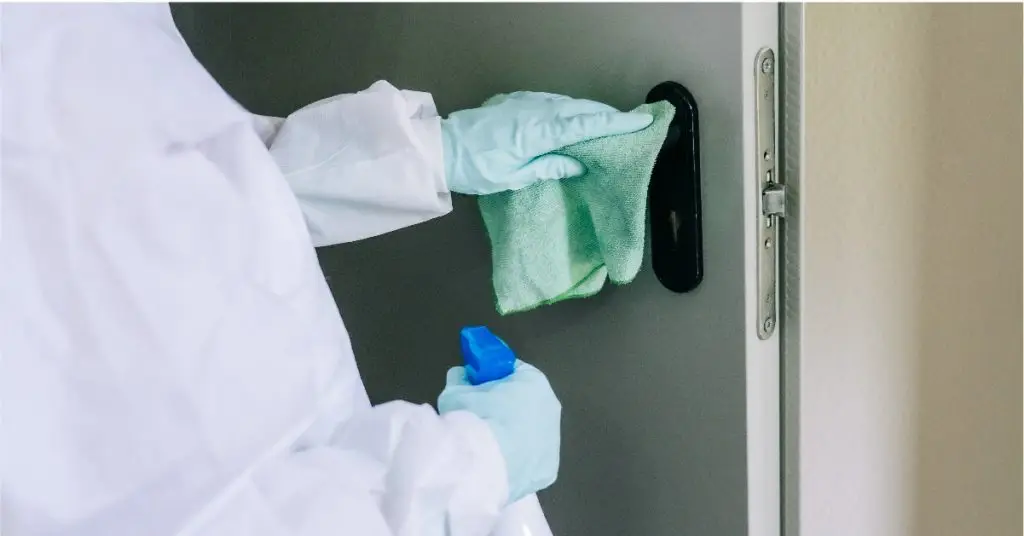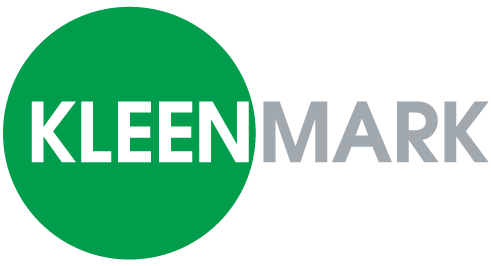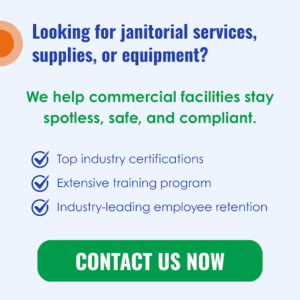
If a million-dollar cleaning question exists for manufacturers in the age of COVID-19, it’s this: How often should I disinfect the hard surfaces and high-touch areas in my facility?
Here’s the truth: A perfect answer doesn’t exist. That’s because the only way to guarantee a facility is always COVID-free is to disinfect it and then lock it down. And that’s not realistic.
With that said, you can get really close. Strategic disinfection done frequently enough to fit your specific needs can significantly reduce the chance of COVID-19 living – and spreading – in your facility.

A lot of variables come into play. But the number of people and foot traffic in your facility is the best indicator of how often to disinfect. Your most commonly used areas need more attention – think, entryways, break rooms, shared workstations, etc. Places where people don’t congregate may warrant less attention.
No matter what best fits your needs – and budget – always follow this 3-step guide to surface disinfection.
Below are three approaches we’ve commonly used with manufacturers looking to enhance their approach to hard-surface disinfection.
Good: Nightly disinfection
Consider this the base level. Nightly, when the last shift leaves (or during the third shift, which is often slower and less populated), make sure your cleaners are disinfecting hard surfaces throughout the facility.
They need to focus on high-touch surfaces. But they should also work to disinfect any equipment and materials that may be shared between shifts. Focus on dwell times (this can be found on the EPA-approved label). And make sure they target primary areas where multiple people will be working.
Better: Stagger your deep disinfection
This approach has gained some traction among manufacturers. The idea is that one “pod” of employees works several days to complete its weekly shift. Then, a cleaning team comes in and thoroughly disinfects the facility on the last night that that “pod” works.
After the facility is disinfected, the next pod of employees begins their work week in a clean, disinfected facility. This concept is meant to reduce cross contamination between employees, therefore reducing downtime if you do end up with a confirmed COVID-19 case.
When we work in a scenario such as this, our teams come in and do a thorough disinfection. That means we likely use electrostatic sprayers to ensure all surfaces are free from bacteria and viruses.
With this approach, we most often still do daily cleaning and high-touchpoint disinfecting to reduce the presence of bacteria and viruses while your employees are working.
Best: Multiple day porters
Day porters are the unsung heroes keeping manufacturing facilities clean and disinfected when workers are in the building.
They primarily focus on high-touchpoint disinfection. That means they’re regularly wiping things like door handles, shared tools, vending machines and counters with EPA-approved disinfectants that kill COVID-19. Read: What’s a day porter, and do I need one?
What we’re seeing from many organizations is the addition of a second, or even third, day porter for each shift or business day. The reason is increased disinfecting simply requires more hands and more resources.
The presence of more day porters also reassures your employees that you take their health and safety seriously. The addition of day porters goes hand-in-hand with nightly disinfecting.
Don’t forget: Empower employees
In the end, a cleaning team can’t be in all places at all times. Give your employees resources to help disinfect hard surfaces will help promote peace of mind and ultimately create a cleaner facility.

Consider the following opportunities:
- Keep a bottle of disinfectant at shared workstations and in communal areas.
- Provide wipes in break rooms.
- Provide hand sanitizing stations or individual bottles for each employee.
- Encourage employees to wipe down their workspace when they are done with their shift.
- Place clear communication (posters, signs, etc.) throughout the plant to encourage employee cleanliness.
Of course, every facility is different. We understand you’ll have specific challenges and needs, from layout to labor. Give us a call or email any time for help dialing in your disinfecting program.
About the Author
Jeremy Angle leads our team in Southeast Wisconsin. As general manager of our Milwaukee branch, he works with some of our largest clients to ensure they have the right cleaning program in place.


